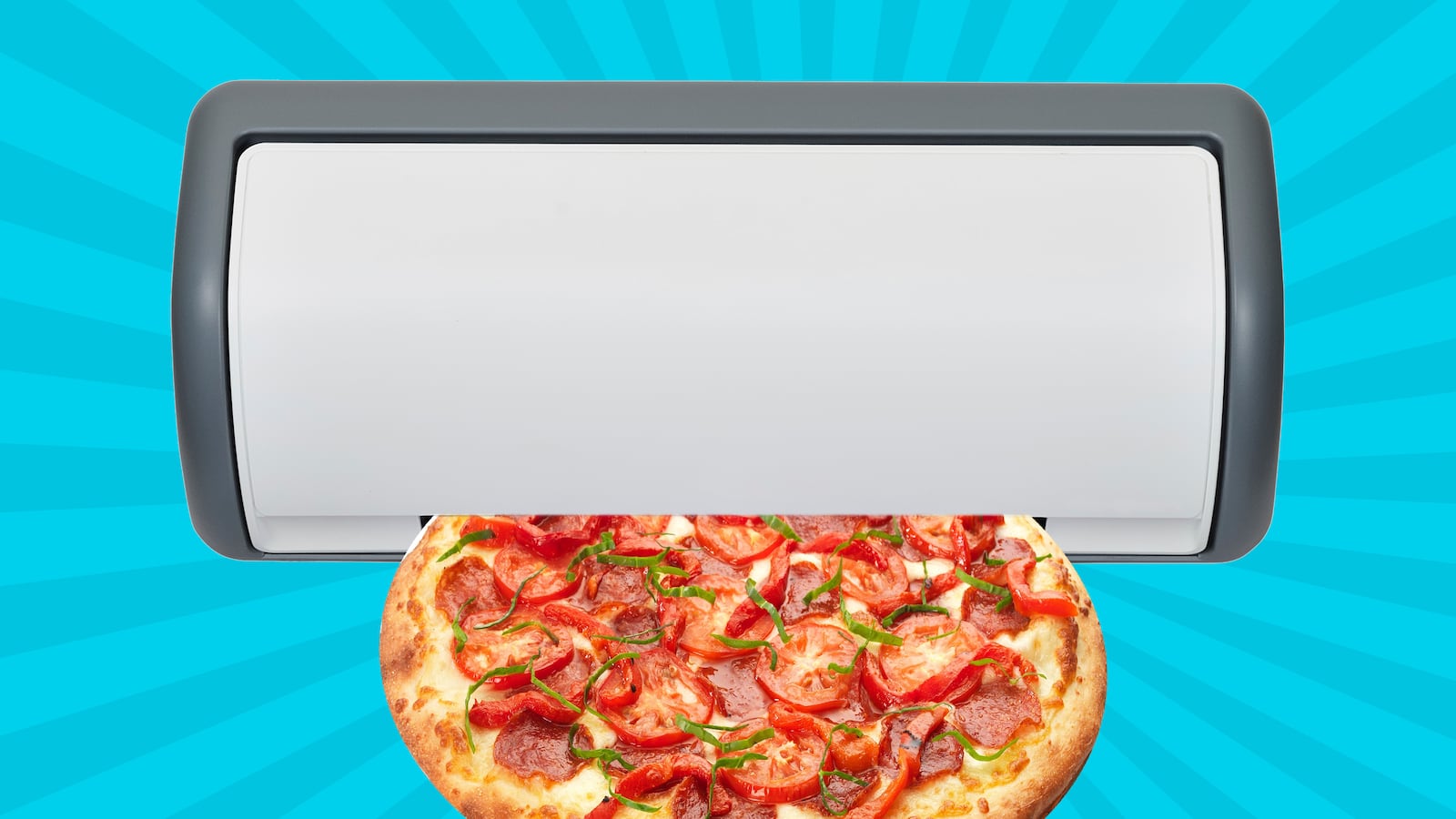Hungry? Print yourself a pizza! The future is now.
Okay, so food printing is a few features short of the state-menu-item-and-it-appears replicator of Star Trek, but hey, we’re only in the 21st century. Printing food is such a new idea that developers are still exploring all the ways that additive manufacturing can craft edible objects.
XYZprinting is a Taiwanese company whose robot resembles a Computerized Numerical Control (CNC) head with a pastry bag or syringe on the end of it. Capable of dispensing up to three ingredients per dish, the printer dispenses layers of raw food that are ready for baking. For a dish like pizza, the machine lays down a spiral of pizza dough, on top of which goes a spiral of tomato sauce. Your kids will be happy to know that, yes, their pizza can be shaped like Mickey Mouse.
Unfortunately due to the gooey nature of uncooked ingredients, most creations are limited to close to two dimensions, such as a cookie sheet or the surface of a cake. Still, who’s going to kick out a robot that mostly makes pizza and cookies with an occasional side interest in decorating cakes? The first commercially available version was demonstrated at the Consumer Electronics Show (CES) this year and is projected to cost its customers (who, for now, are limited to Asia) an estimated $2,035.
The Foodini is another such device using this method who advertises construction of pizzas and cookies, but also stranger concoctions such as crackers of roasted red pepper and bowls made of mashed potatoes for folks who like lots of gravy.
3D Systems is a South Carolina-based company taking a more confectionary approach. Their method is more similar to other advanced methods found in the world of 3D printing known as “Fused Deposition Modeling” (FDM). The layer-by-layer processing of the ChefJet Pro begins with a very thin layer of sugar which is fused into place with colored water from the head of an inkjet. The stage then lowers and the process repeats, building up an intricately constructed dessert from a vast variety of geometries, many of which (such as interlocking cubes) would be impossible to construct using traditional injection-molded methods for making chocolate bunnies. With the same four colors of water found in the print heads of your household printer, thousands of colors can be produced in stunningly elaborate patterns and configurations.
Additionally, the ChefJet can also print chocolate. Here, the layers alternate between the solids found in chocolate (such as coco powder and powdered milk) followed by oils (such as coco butter) to sculpt chocolate, complete with all its textures and tastes, into any 3D shape you can imagine. Demonstrated at CES 2014, models are available from $4,000 to $9,000.
Printing food isn’t just for kitchen novelties. NASA has contracted a Texas company, Systems and Materials Research Consultancy, to explore how 3D printing can be used to craft food in space. It is hoped that new methods will be able to craft foods from shelf-stable ingredients, rather than relying on the current methods of individually prepackaged foods that degrade in quality and nutrition over time.





